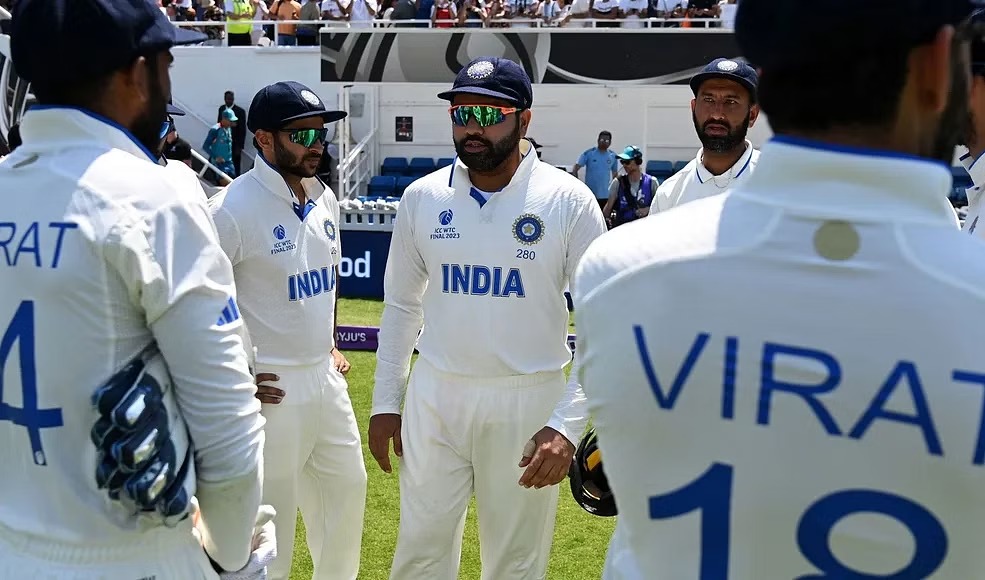
As the dust settles on the World Test Championship final defeat, it is time to introspect. Look back and learn the lessons. A deep dive into some of India’s best wins in key games over the last decade and a half throws up some rather interesting findings. Each of these wins saw some fascinating out-of-the-box thinking from the captain and the management, something that was missing in the WTC final.
To start with, the World T20 of 2007. Few expected that MS Dhoni would turn to Joginder Sharma to bowl the final over against Pakistan. And while he conceded a six early in the over, he managed to do the job for his captain and country, and etched himself into the history books. It was a fascinating move that paid off.
This was not the last time that MS Dhoni tried out something unconventional. In the 2011 World Cup final, he promoted himself in the batting order ahead of in-form Yuvraj Singh and Suresh Raina — much to everyone’s surprise – and took India home. It was the only innings of relevance from Dhoni in the tournament, and it came in the World Cup final. To come ahead of Yuvraj, the player of the tournament, was yet another example of out-of-the-box thinking.
A third memory, not so firmly etched in the public imagination, is of how Dhoni turned the tide in the 2013 Champions Trophy final against England in Birmingham. Defending a modest 129 off 20 overs in a rain-curtailed game, Dhoni was fast running out of options, with Eoin Morgan and Ravi Bopara on a roll. That’s when he turned, counter-intuitively for many experts, to Ishant Sharma, who had been singled out for harsh treatment by the English batters.
Sitting in the Edgbaston press box, we agreed that it was a huge gamble: one more bad over, and it would have been curtains for India. But, to considerable surprise, Ishant picked up two wickets in two balls, and all of a sudden, India had a chance. In another inspired tactical move, Dhoni got Ravindra Jadeja and Ravichandran Ashwin, his frontline spinners, to bowl overs 19 and 20. They were tasked with teasing the English batsman, far more comfortable against pace, to slog and perish. It worked, and gave Dhoni the only piece of ICC silverware missing from his and India’s collection.
More recently, the win against Australia in the Boxing Day Test at the Melbourne Cricket Ground in December 2020, coming on the back of the ignominious 36 not out in Adelaide, could also be attributed to bold calls taken by the captain and the management.
It was a brave decision to play Jadeja in Melbourne, ahead of a batsman, and he stood up to the challenge and made it count. His all-round ability proved to be an asset, and his improved batting skills meant India did not miss a specialist.
Did India miss a trick by playing four pacers at The Oval? Was it a defensive act to play both Umesh Yadav and Shardul Thakur, and leave R Ashwin – the bowler Australia feared most – on the bench? Did the team management err on the side of caution, going against their stated philosophy of playing aggressive cricket?
In sport, the best challenge themselves every single day. Novak Djokovic, the same age as Rohit Sharma, India’s captain at The Oval, won a record 23rd Grand Slam title on Sunday. At 36, an age when conventional wisdom suggests he should be in decline, Djokovic brushed aside far younger rivals to win the French Open at Roland Garros for the third time. In the semifinal, it was the 20-year-old Carlos Alcaraz who couldn’t cope with the physical intensity that Djokovic brought to the contest.
That’s what we have expect from Rohit and Virat Kohli, and the rest of this team. That was the kind of commitment that scripted a remarkable series triumph in Australia in 2020-21, even as stalwarts fell by the wayside with injuries and because of other factors. After the 2019 World Cup semifinal defeat to New Zealand and the loss to England in the World T20 semifinal in Adelaide last year, India recognised that their white-ball teams needed a refresh. The emergence of the likes of Suryakumar Yadav, Ishan Kishan, Arshdeep Singh and others is testament to that.
The likes of Mohammed Shami and Umesh have contributed hugely to Indian cricket over the past decade, home and away. But neither is getting any younger, and it’s hard to see them measuring out their run-ups in the next WTC final if India get that far. It’s time for the baton to be passed on to Mohammed Siraj, Shardul Thakur, Prasidh Krishna, Avesh Khan, Arshdeep and the other pace options who catch the eye with the A team.
That’s what evolution is all about. And that’s how you ensure that you’ll always be challenging for the top prizes. For Australia, David Warner may be on the last lap of a magnificent career. But in Travis Head, they have unearthed another batter who can change the game in a session, as he did in the WTC final with Steve Smith for company.
That’s what India needs to emulate. Abusing the players who have done sterling service for a decade and more is sick and wrong, and speaks volumes about the mindset of the cowards that do it. But at the same time, Indian cricket needs to recognise that it’s come to the end of an era. If it doesn’t evolve, it will stagnate. And no trophies were ever won by a team that stood still.




